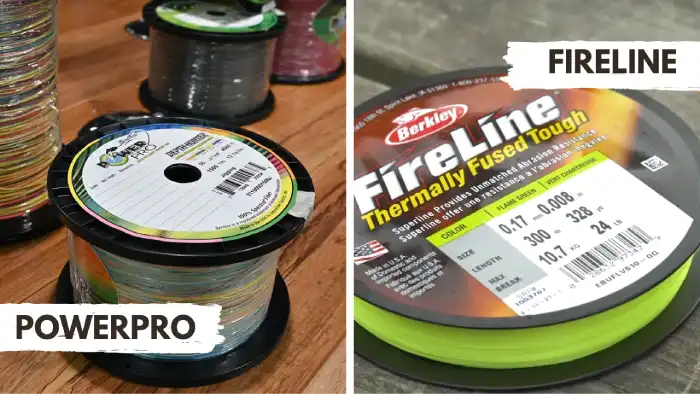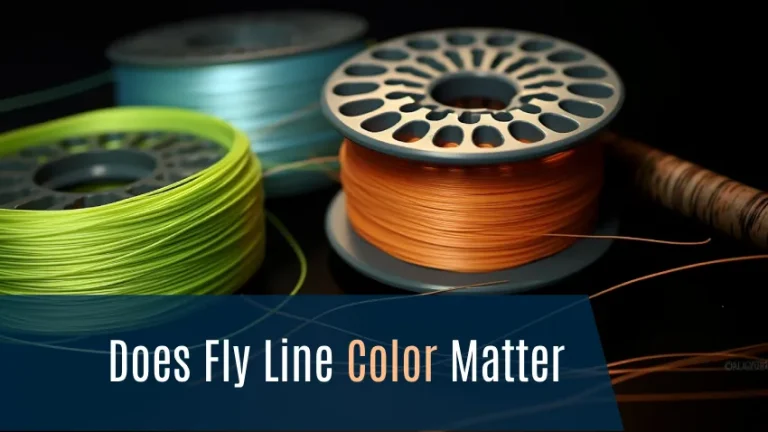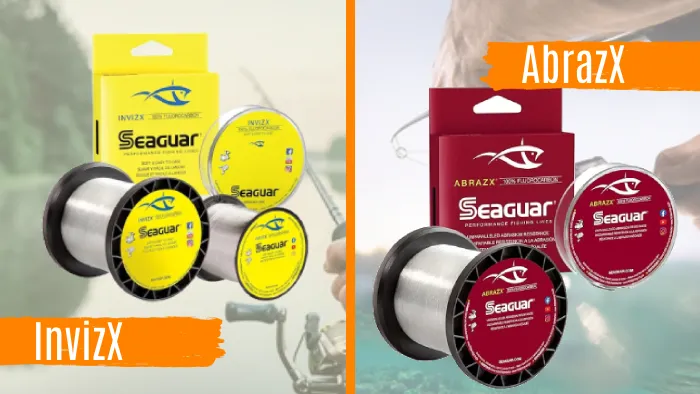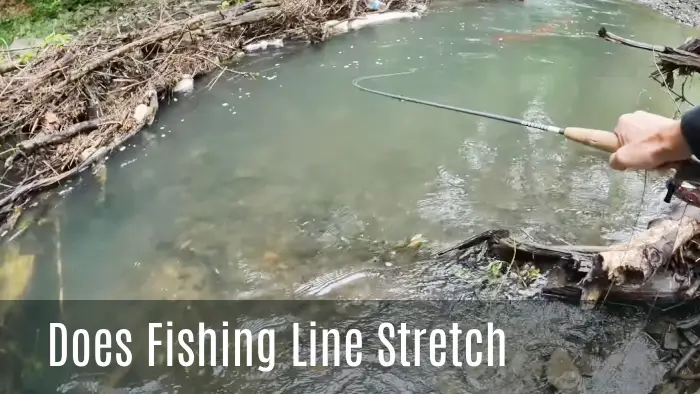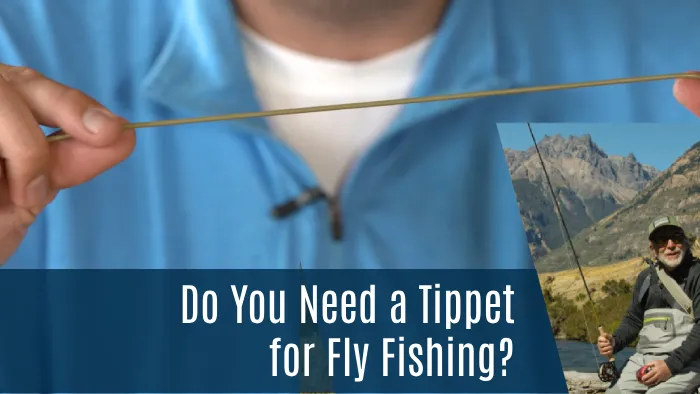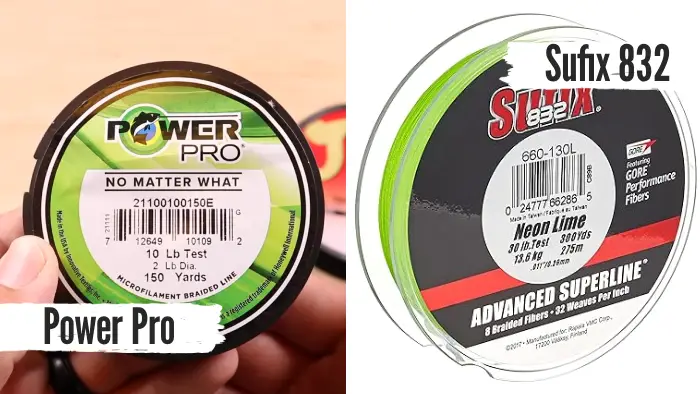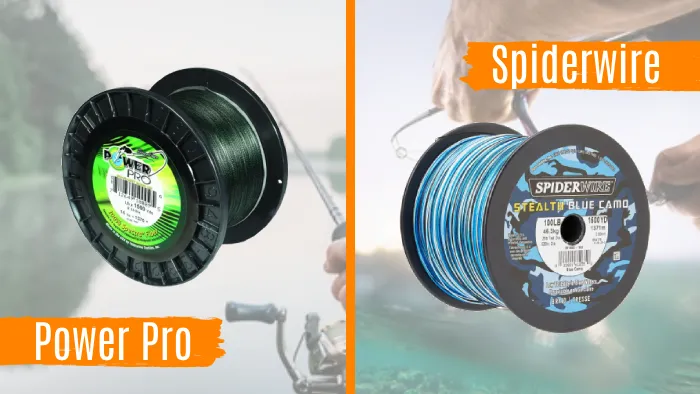Powerpro Vs Fireline Fishing Line: 10 Differences
Anglers have to make a crucial decision when choosing fishing lines, as it directly impacts their fishing success. PowerPro and FireLine are popular choices, each offering unique features and advantages. These lines are built to withstand the toughest conditions and deliver results like a well-oiled machine.
The primary difference lies in their material composition. PowerPro is made from Spectra fiber, giving it a smooth and round profile. The FireLine is constructed with a fused and braided microfilament Dyneema, which imparts a unique texture.
In this article, we will explore the differences and nuances between PowerPro and FireLine fishing lines. You will see the composition, performance characteristics, and environmental factors that differentiate these fishing lines.
Differences Between PowerPro and FireLine Fishing Line
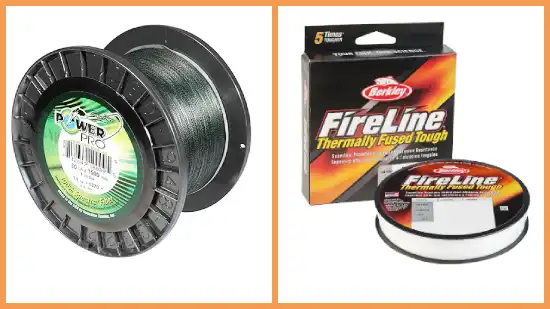
When comparing PowerPro and FireLine fishing lines, several key differences exist.
- Material composition
- Strength and sensitivity
- Knot strength
- Color options
- Smoothness and casting
- Abrasion resistance
- Diameter variability
- Memory and manageability
- Environmental impact
- Price point
No 01. Material Composition
PowerPro is made from Spectra fiber, a high-strength polyethylene that gives it a smooth and round profile. This composition allows for reduced line friction and increased casting distance.
On the other hand, the FireLine fishing line is constructed using a fused and braided microfilament Dyneema. This unique texture provides excellent sensitivity, allowing you to feel even the slightest nibble.
No 02. Strength and Sensitivity
You’ll notice distinct differences in strength and sensitivity between PowerPro and FireLine fishing line.
Compared to FireLine, PowerPro has a higher strength-to-diameter ratio, making it thinner and more sensitive. This increased sensitivity allows you to feel even the subtlest of bites, giving you an advantage in detecting fish activity.
In contrast, FireLine tends to be thicker for the same-pound test, which reduces its sensitivity but offers greater abrasion resistance. This can be beneficial when fishing in areas with rough structures or with a higher chance of line abrasion.
No 03. Knot Strength
The knot strength of PowerPro and FireLine fishing lines differs significantly. PowerPro fishing line has a smooth and round profile that allows knots to cinch down tightly, resulting in excellent knot strength. This means that you can have confidence in the strength of your knots when using the PowerPro line.
Conversely, FireLine fishing line can be more challenging regarding knot tying. Its unique texture can cause knots to slip more frequently, potentially leading to lost fish. However, using proper knot-tying techniques can mitigate this drawback and still achieve strong knots with the FireLine line.
No 04. Color Options
Choose from a wide range of color options with PowerPro and FireLine fishing lines, allowing you to customize your fishing line to match your surroundings.
PowerPro offers a diverse selection of colors, providing anglers with the ability to blend their line with different fishing environments. This versatility is advantageous when fishing in various conditions, as it allows you to remain inconspicuous to the fish.
On the other hand, FireLine has a more limited color range, which may not be as adaptable. However, you may prefer FireLine’s high-visibility colors for tracking line movement. This can be beneficial when fishing in low light conditions or when you must closely monitor the line.
No 05. Smoothness and Casting
Due to its smooth and round profile, PowerPro allows for longer and more precise casts. The reduced friction also helps to minimize tangling and backlash, resulting in a smoother overall fishing experience.
Meanwhile, FireLine’s unique texture can create more friction in the guides, leading to reduced casting distance. However, FireLine compensates for this by offering exceptional manageability, making it ideal for situations where precision casting is essential.
No 06. Abrasion Resistance
To determine the differences in abrasion resistance between PowerPro and FireLine fishing lines, consider their performance when faced with rough underwater structures and sharp objects.
FireLine, with its fused microfilament Dyneema composition, offers superior abrasion resistance. It can withstand contact with these obstacles, minimizing damage and increasing its durability.
Meanwhile, PowerPro fishing line may be more susceptible to abrasion, making it necessary for anglers to exercise caution when fishing around rough structures and sharp objects.
This difference in abrasion resistance between PowerPro and FireLine can greatly impact the lifespan and performance of the fishing line. You may prefer FireLine for its exceptional durability and resistance to wear and tear if you frequently encounter these obstacles.
No 07. Diameter Variability
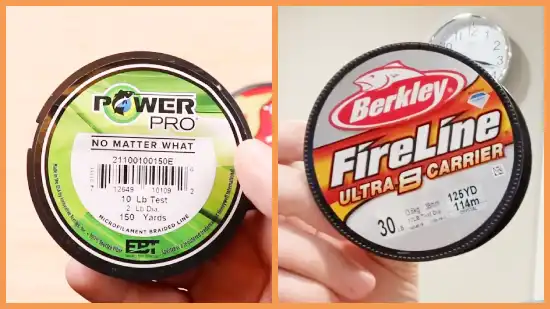
When comparing the diameter variability between PowerPro and FireLine fishing lines, it’s important to note that FireLine may exhibit more variability in diameter along the length of the line. This means that the diameter of FireLine may vary more throughout the line than PowerPro’s.
The variability in diameter can have an impact on the performance of the line. A more consistent diameter, like PowerPro’s, provides predictable and uniform performance.
On the other hand, the variability in the diameter of FireLine can affect casting accuracy and distance. It can also affect the line’s strength and durability.
Therefore, if you prefer a fishing line with less diameter variability, PowerPro may be your better choice.
No 08. Memory and Manageability
If you prefer a fishing line with low memory and excellent manageability, PowerPro is a better choice than FireLine.
PowerPro fishing line is designed to stay relatively limp on the reel, reducing the chances of coiling or kinking. This means you can spend more time fishing and less time dealing with line twists and tangles.
In contrast, FireLine fishing lines can exhibit more memory, making them more likely to twist and tangle, especially in cold weather conditions.
No 09. Environmental Impact
Spectra fiber is used in the manufacture of PowerPro, an eco-friendly material. It doesn’t contribute to microplastic pollution in the water, making it a preferred choice for anglers concerned about the environment.
Then again, FireLine, a fused microfilament line, may release tiny microfilaments into the environment over time, potentially causing harm to aquatic ecosystems. This makes FireLine less environmentally friendly compared to PowerPro.
No 10. Price Point
An angler on a budget may prefer PowerPro because it is more affordable. On the other hand, FireLine is often considered a premium line priced accordingly.
While PowerPro may be the more cost-effective option, you should note that FireLine’s higher price may be justified by the added benefits it offers in certain fishing situations.
When considering which line to purchase, it’s crucial to weigh the cost against the specific needs and preferences of your fishing style.
Comparison Table Between PowerPro and FireLine
| Aspect | PowerPro Fishing Line | FireLine Fishing Line |
| Material Composition | Made from Spectra fiber, smooth and round. | Constructed with fused microfilament Dyneema, unique texture. |
| Strength and Sensitivity | High strength-to-diameter ratio, thin and sensitive. | Thicker for the same pound test, reduced sensitivity, but more abrasion-resistant. |
| Knot Strength | Excellent knot strength, knots cinch tightly. | Knots can be challenging to tie, may slip more easily. |
| Color Options | Wide range of color choices. | More limited color selection. |
| Smoothness and Casting | Smooth casting, longer and more accurate casts. | Texture creates more friction, reducing casting distance. |
| Abrasion Resistance | More prone to abrasion. | Superior abrasion resistance. |
| Diameter Variability | More consistent diameter. | More variability in diameter. |
| Memory and Manageability | Low memory, excellent manageability. | More memory, stiffer, prone to twisting. |
| Price Point | More affordable. | Often perceived as a premium line. |
| Environmental Impact | Eco-friendly, minimal microplastic pollution. | It may release microfilaments into the environment. |
Can I use PowerPro or FireLine for saltwater fishing?
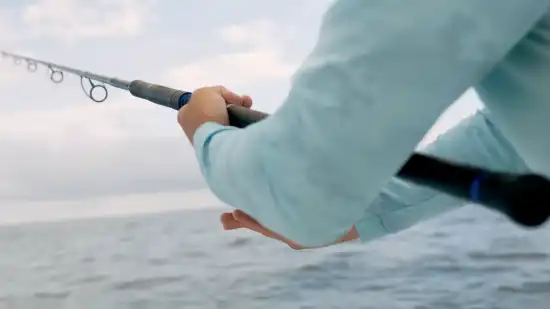
You can use PowerPro or FireLine for saltwater fishing. Both fishing lines are designed to handle the harsh conditions of saltwater environments.
PowerPro offers excellent smoothness and casting ability, making it a great choice for saltwater casting applications. Alternatively, FireLine is known for its exceptional abrasion resistance, which is beneficial when fishing around rough structures or coral reefs.
Can I use PowerPro or FireLine for ultralight fishing applications?
PowerPro and FireLine may not be the most suitable for ultralight fishing applications due to their relatively thicker diameters in lower pound test ratings. When it comes to ultralight fishing, you want a fishing line that’s thin and lightweight, allowing for better sensitivity and casting accuracy.
Instead, consider using monofilament or fluorocarbon lines, which offer finer diameter options specifically designed for ultralight fishing. These lines aren’t only thinner and provide better knot strength and invisibility underwater.
Do PowerPro and FireLine have specific temperature limitations for use?
PowerPro is known for maintaining its performance in both hot and cold conditions. It has a broad temperature range and is less likely to become stiff in extreme cold.
On the other hand, FireLine may experience some stiffness in extremely cold weather, potentially affecting casting performance. It’s important to note that this stiffness isn’t permanent and will return to normal as the temperature rises.
PowerPro or FireLine: The World’s Angling Line of Choice
As you can see, angling scenarios and individual preferences differ with PowerPro and FireLine.
PowerPro excels in sensitivity and smooth casting, while FireLine offers superior abrasion resistance and visibility underwater. You can tailor your choice by understanding these lines by casting for freshwater bass, trolling in saltwater, or angling through icy depths.With the knowledge gained from this exploration, you’re better equipped to select the ideal fishing line for your next adventure along the water. So, weigh your options carefully and make a decision that will reel in the best catch.

